The sleepy city of Como in Northern Italy has never really garnished much fanfare when it comes to modern history buffs of ancient Roman history but in the last few years, it has come back onto the radar of archaeologists after a group of workers made an incredible discovery when they found a massive treasure of gold coins and artifacts that originate from the time of what appears to be the ancient epicenter of a global Masonic Empire.
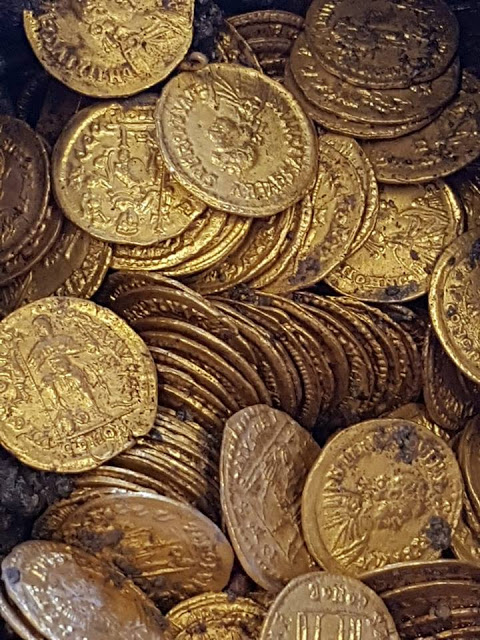
In 2018, the Italian Minister for Culture announced the findings of hundreds of Roman gold coins in Northern Italy unearthed at the site of an old theatre in Como.

The discovery was made in the basement of the old Cressoni theatre by workers who were renovating the building that was built in 1870 and was later converted into a luxury home and a cinema, but it has remained abandoned since 1997.

According to an article posted on CNN, rare coins expert Maria Grazia Facchinetti said that whoever buried the jar did so “in such a way that in case of danger they could go and retrieve it.”
The old gold coins show the era of when they were made with beautiful engravings of late the Roman emperors Honorius, Valentinian III, Leon I, Antonio, and Libio Severo, which has led people like Facchinetti to believe that “the owner is not a private subject, rather it could be a public bank or deposit.”
“They were stacked in rolls similar to those seen in the bank today,” she said, adding the coins have engravings about emperors Honorius, Valentinian III, Leon I, Antonio, and Libio Severo “so they don’t go beyond 474 AD.”
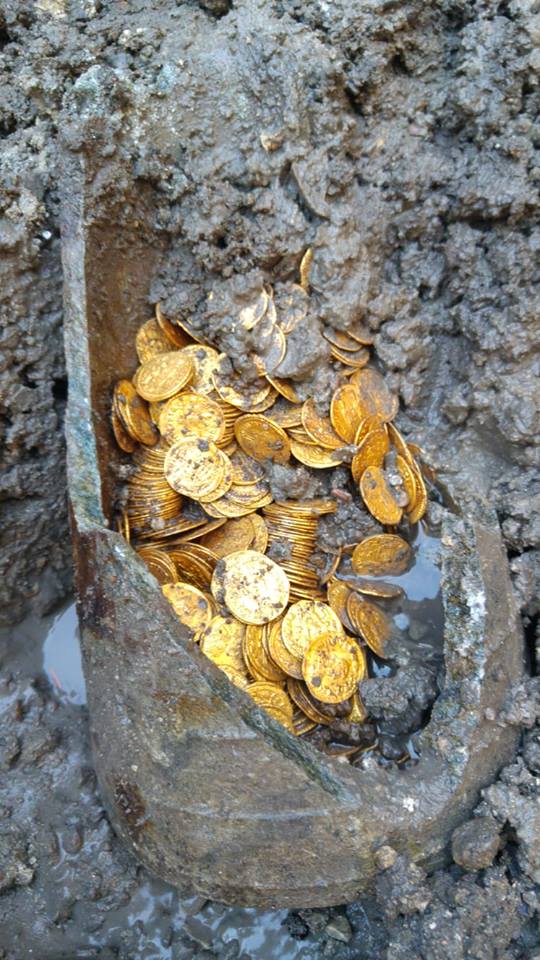
One of Como’s archaeology superintendents, Luca Rinaldi, told London’s The Times that the value of the coins is inestimable, and that “we are talking about an exceptional discovery.”
Centinaia di monete d’oro della tarda epoca imperiale sono state rinvenute in pieno centro a #Como, in un recipiente in pietra ollare di forma inedita. “Una scoperta che mi riempie di orgoglio” ha detto il ministro @BonisoliAlberto pic.twitter.com/ff6ep38gtG
— MiBACT (@_MiBACT) September 7, 2018
Modern Freemasons will find this story particularly interesting given the fact that these are their true ancestors who were an international Fraternity formed in Northern Italy under the patronage of the Father of the Roman Empire – Julius Caesar in 59 BCE. They were mainly imported from the Greco-Egyptian Empire into Rome after he had conquered the East in what appears to be the beginning history of a massive worldwide Roman Masonic building project.
You can learn more about these Roman Masons in my article, The Comacine Masters’ Global Masonic Knot.
Of course, a global project to build these massive Roman structures would require a lot of workers, materials, and money that I contend based on my research that they formed guaranteed pay structures for the Brotherhood during a time of chaos in order to keep them paid, fed, and housed which made them staunch loyalists to the Roman cause.
As Albert Mackey records what author Quaternal de Quincy, in his Dictionary of Architecture, notes under the heading Comacines;
“to these men who were both designers and executors, architects, sculptors and mosaicists, may be attributed the Renaissance of art and its propagation in the southern countries, where it marched with Christianity. Certain it is that we owe to them that the heritage of antique ages was not entirely lost, and it is only by their tradition and imitation that the art of building was kept alive, producing works which we still admire and which become surprising when we think of the utter ignorance of all science in those Dark Ages.” (2)
He further writes about they were the first liberals given freedom which they earned and also the money and pay they were guaranteed;
“These bodies in order to enjoy exclusive exercise of their profession, and that its profits should be secure to them, not only by law, but by the inability of others to violate it, by degrees made their business, or craft, as they called it, a profound mystery from the world at large, and only suffered their own apprentices to be initiated in its higher branches and improvements, most gradually;
and in every place where a variety of paths of industry and art were struck out, these crafts, these corporations, these masterships and these mysteries became so universally prevalent, that not only the arts of a wholly mechanical nature, but even those of the most exalted and intellectual nature—those which in ancient times had been considered the exclusive privilege of freemen and citizens, and those dignified with the name liberal—were submitted to all those narrow rules of corporations and connected with all the servile offices of apprenticeship.”
Albert Mackey notes how during the rule of the German Lombards, that their influence, landmarks, and banking system had spread all around Europe
Mackey had written;
“The Lombards—in the space of two short centuries, producing trade, in legislation, in finance, in industry of every description, new developments so great, that from them, and from the regions to which they attach their names, has issued the whole of that ingenious and complex system of bills of exchange, banks, insurance, double-entry bookkeeping, commercial and marine laws and public loans, since adopted all over Europe—all over Europe retaining, in their peculiar appellations the trace and landmarks of their origin—and all over Europe affording to capital and commerce an ease of captivity and a security unknown before.” (2)
These Old Roman Masons and Philosophers weer known as the Comacine Masters (Magistri Comacini) who hailed from what appears to be an old favorite resort town of the Greeks and Cretans called Lake Como. It was under the rule of Julius Caesar that the name was later changed to “Novum Comum” in order to honor this “international commune of Masons” which could be compared in our modern-day to a city in the U.S. called Washington DC that was founded and is ruled by FreeMasons who honor the same Roman symbology of their ancestors.
The Comacine Masters (Magistri Comacini) were originally part of a crew that Julius Caesar had recruited in a wave of approximately 6,000 immigrants and 500 illustrious Greek and or possibly Phoenician/Cretan families who were gifted his patronage. These were the wisest of philosophers, the best Masons, and the most trustworthy workers that Caesar would incorporate into his Universal Empire such as Pliny the Elder.
You will find that the Lost Treasure of the Comacine Masons is currently being held in a restoration laboratory in Milan in order to learn even more about their cultural and historical significance. I suggest that these archaeologists look to the Comacine Masters (Magistri Comacini) who may one day claim what is ritefully theirs under Roman Law and the Rule of the Caesars.
SOURCES:
1. Italian Minister of Culture
2. CNN
3. An Encyclopedia of Freemasonry and Its Kindred Sciences …, Volume 1 By Albert Gallatin Mackey, William James Hughan
Photos Credit: Mibac

Moe is the founder of GnosticWarrior.com. He is a father, husband, author, martial arts black belt, and an expert in Gnosticism, the occult, and esotericism.

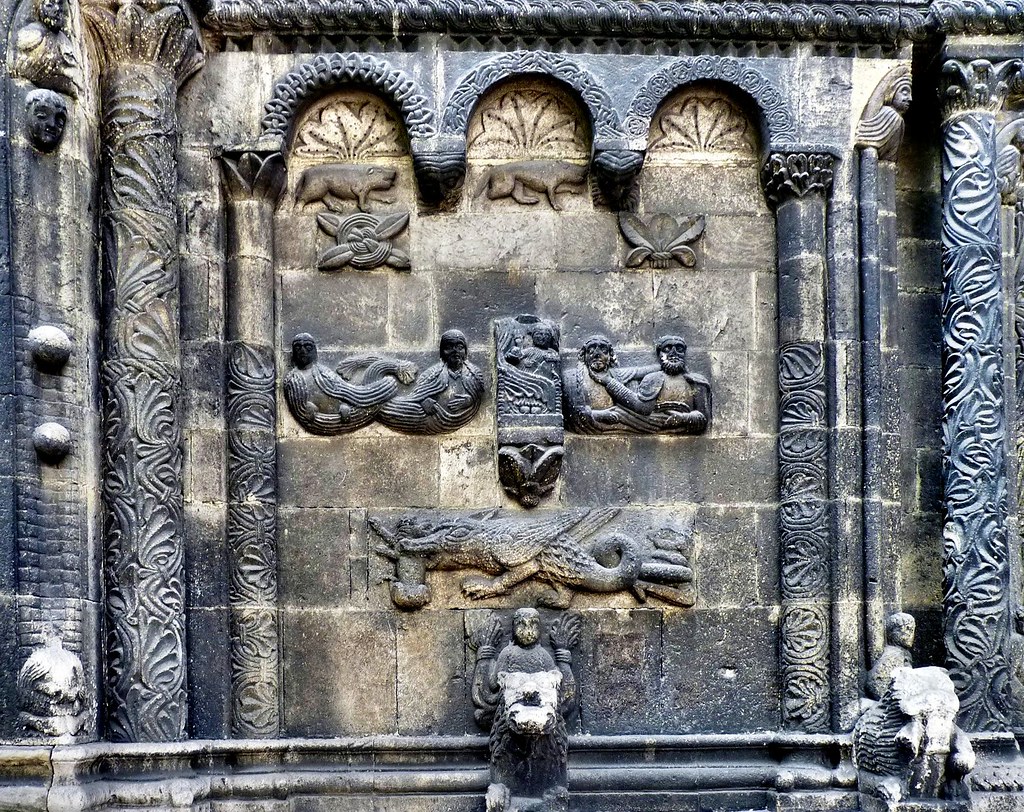
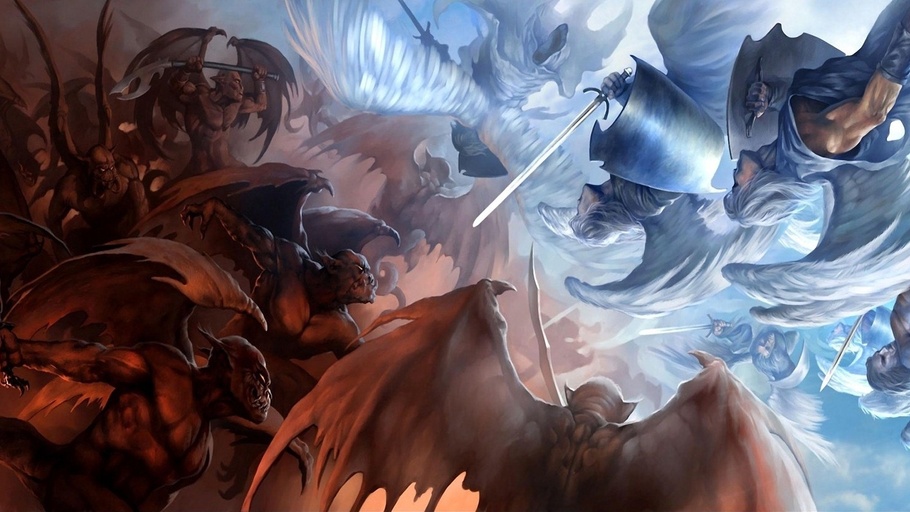
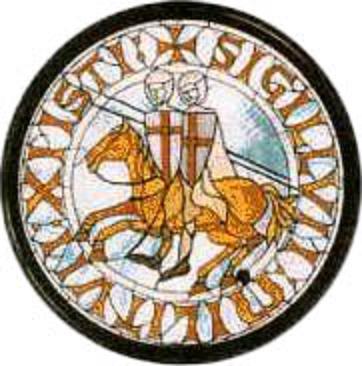


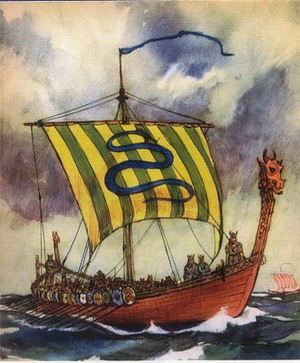

![How King Edwin’s next successors lost both the faith of their nation and the kingdom; but the most Christian King Oswald retrieved both [633 A.D.] | Book 3 | Chapter 1 How King Edwin’s next successors lost both the faith of their nation and the kingdom; but the most Christian King Oswald retrieved both [633 A.D.] | Book 3 | Chapter 1](https://www.gnosticwarrior.com/wp-content/plugins/contextual-related-posts/default.png)